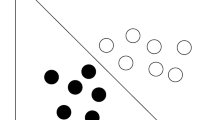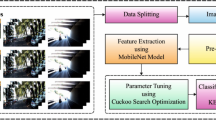Abstract
In recent years, researchers have proposed many methods to solve the problem of obstacle detection. However, computer vision-based vehicle detection and recognition technology is still not mature enough. This research combines machine learning technology to construct a traffic object recognition system and applies innovative technology to the computer vision recognition system to construct an automatic identification system suitable for current traffic demand and improve the stability of the traffic system. Moreover, this study uses a combination of a monocular camera and a binocular camera to sense the traffic environment and obtain vehicle position and velocity information. In addition, this study is based on the binocular stereo camera to find the obstacle space and obtain the obstacle relative to the position and speed of the vehicle and combine the obstacle space information to optimize the obstacle frame of the target vehicle. Through experimental research and analysis, it can be seen that the algorithm proposed in this study has certain recognition effect and can be applied to traffic object recognition.






















Similar content being viewed by others
Change history
14 December 2022
This article has been retracted. Please see the Retraction Notice for more detail: https://doi.org/10.1007/s00521-022-08148-7
References
Dan LI, Zhongbin N, Xinyun W (2018) Application of convolution neural network in vehicle identification system. J Anhui Univ Technol (Nat Sci) 35(2):148–152
Wang Y, Bialkowski KS, Pretorius AJ et al (2017) In-road microwave sensor for electronic vehicle identification and tracking: link budget analysis and antenna prototype. IEEE Trans Intell Transp Syst 19(1):123–128
Zhu J, Zeng H, Jin X et al (2019) Joint horizontal and vertical deep learning feature for vehicle re-identification. Sci China Inf Sci 62(9):199101
Qian W, Yimin C, Youdong D (2018) Vehicle re-identification algorithm based on bag of visual words in complicated environments. J Comput Appl 38(5):1299–1303
Liu Y, MacDonald J, Di Maio D (2019) Modal parameter identification from measurements of vehicle-bridge interaction. In: Dynamics of civil structures, Vol 2. Springer, Cham, pp 247–249
Huang Z, Qiu S, Li J, Zhao Y, Cui P, Zhang R (2018) Road traffic sign identification in weak illumination for intelligent vehicle based on machine vision. Recent Patents Mech Eng 11(2):127–134
Albisser M, Dobre S, Berner C et al (2017) Aerodynamic coefficient identification of a space vehicle from multiple free-flight tests. J Spacecr Rockets 54(2):1–10
Huang L, Beauchemin D (2017) Forensic analysis of automotive paint chips for the identification of the vehicle manufacturer, colour and year of production using electrothermal vaporization coupled to inductively coupled plasma optical emission spectrometry. J Anal Atom Spectrom 32(8):1601–1607
Liu P, Jilai YU (2017) Identification of charging behavior characteristic for large-scale heterogeneous electric vehicle fleet. J Modern Power Syst Clean Energy 3:1–15
Fotouhi A, Auger D, Propp K et al (2017) Electric vehicle battery parameter identification and SOC observability analysis: NiMH and Li-S case studies. IET Power Electron 10(11):1289–1297
Gentili M, Mirchandani PB (2018) Review of optimal sensor location models for travel time estimation. Transp Res Part C Emerg Technol 90:74–96
Zhang R, Jing J, Tao J, Hsu SC, Wang G, Cao J, Lee CS, Zhu L, Chen Z, Zhao Y (2013) Chemical characterization and source apportionment of PM 2.5 in Beijing: seasonal perspective. Atmos Chem Phys Discuss 13(4):9953–10007
Allen J, Ghoreyshi M (2018) Forced motions design for aerodynamic identification and modeling of a generic missile configuration. Aerosp Sci Technol 77:742–754
Armanini SF, De Visser CC, De Croon GCHE, Mulder M (2016) Time-varying model identification of flapping-wing vehicle dynamics using flight data. J Guidance Control Dyn 38(12):526–541
Farroni F, Lamberti R, Mancinelli N et al (2018) TRIP-ID: a tool for a smart and interactive identification of magic formula tyre model parameters from experimental data acquired on track or test rig. Mech Syst Signal Process 102:1–22
Bao Y, Shi Z, Beck JL et al (2017) Identification of time-varying cable tension forces based on adaptive sparse time-frequency analysis of cable vibrations. Struct Control Health Monit 24(3):e1889
Eichhorn M (2005) Guidance of an autonomous underwater vehicle in special situations. In: Europe Oceans, Vol 1. IEEE, pp 35–40
Bai Y, Lou Y, Gao F, Wang S, Wu Y, Duan LY (2018) Group sensitive triplet embedding for vehicle re-identification. IEEE Trans Multimedia 20(9):2385–2399
Liu X, Liu W, Mei T, Ma H (2017) PROVID: progressive and multimodal vehicle reidentification for large-scale urban surveillance. IEEE Trans Multimedia 20(3):645–658
Gong-ping YUAN, Yi-ping TANG, Wang-ming HAN, Qi CHEN (2018) Vehicle category recognition based on deep convolutional neural network. J Zhejiang Univ (Eng Sci) 52(4):694–702
van Wyk F, Wang Y, Khojandi A et al (2019) Real-Time sensor anomaly detection and identification in automated vehicles. IEEE Trans Intell Transp Syst (online)
Cheng HY, Yu CC, Lin CL et al (2019) Ego-lane position identification with event warning applications. IEEE Access 7:14378–14386
Kan S, Cen Y, He Z et al (2019) Supervised deep feature embedding with hand crafted feature. IEEE Trans Image Process 28(12):5809–5823
Coutinho WP, Battarra M, Fliege J (2018) The unmanned aerial vehicle routing and trajectory optimisation problem. Comput Ind Eng 120:116–128
Acknowledgements
This paper was supported by project funded by China Postdoctoral Science Foundation, project funded by National Key R&D Program of China (Nos. 2017YFB0503604; 2017YFB0503801), project funded by Cross and Multi Dimension Electronic Fence System Project, project funded by the Project (017/2018/A) of FDCT and project funded by the Project of Macao Foundation.
Author information
Authors and Affiliations
Corresponding author
Ethics declarations
Conflict of interest
The authors declare that have no conflict interest.
Additional information
Publisher's Note
Springer Nature remains neutral with regard to jurisdictional claims in published maps and institutional affiliations.
This article has been retracted. Please see the retraction notice for more detail: https://doi.org/10.1007/s00521-022-08148-7"
Rights and permissions
Springer Nature or its licensor (e.g. a society or other partner) holds exclusive rights to this article under a publishing agreement with the author(s) or other rightsholder(s); author self-archiving of the accepted manuscript version of this article is solely governed by the terms of such publishing agreement and applicable law.
About this article
Cite this article
Li, D., Deng, L. & Cai, Z. RETRACTED ARTICLE: Design of traffic object recognition system based on machine learning. Neural Comput & Applic 33, 8143–8156 (2021). https://doi.org/10.1007/s00521-020-04912-9
Received:
Accepted:
Published:
Issue Date:
DOI: https://doi.org/10.1007/s00521-020-04912-9




